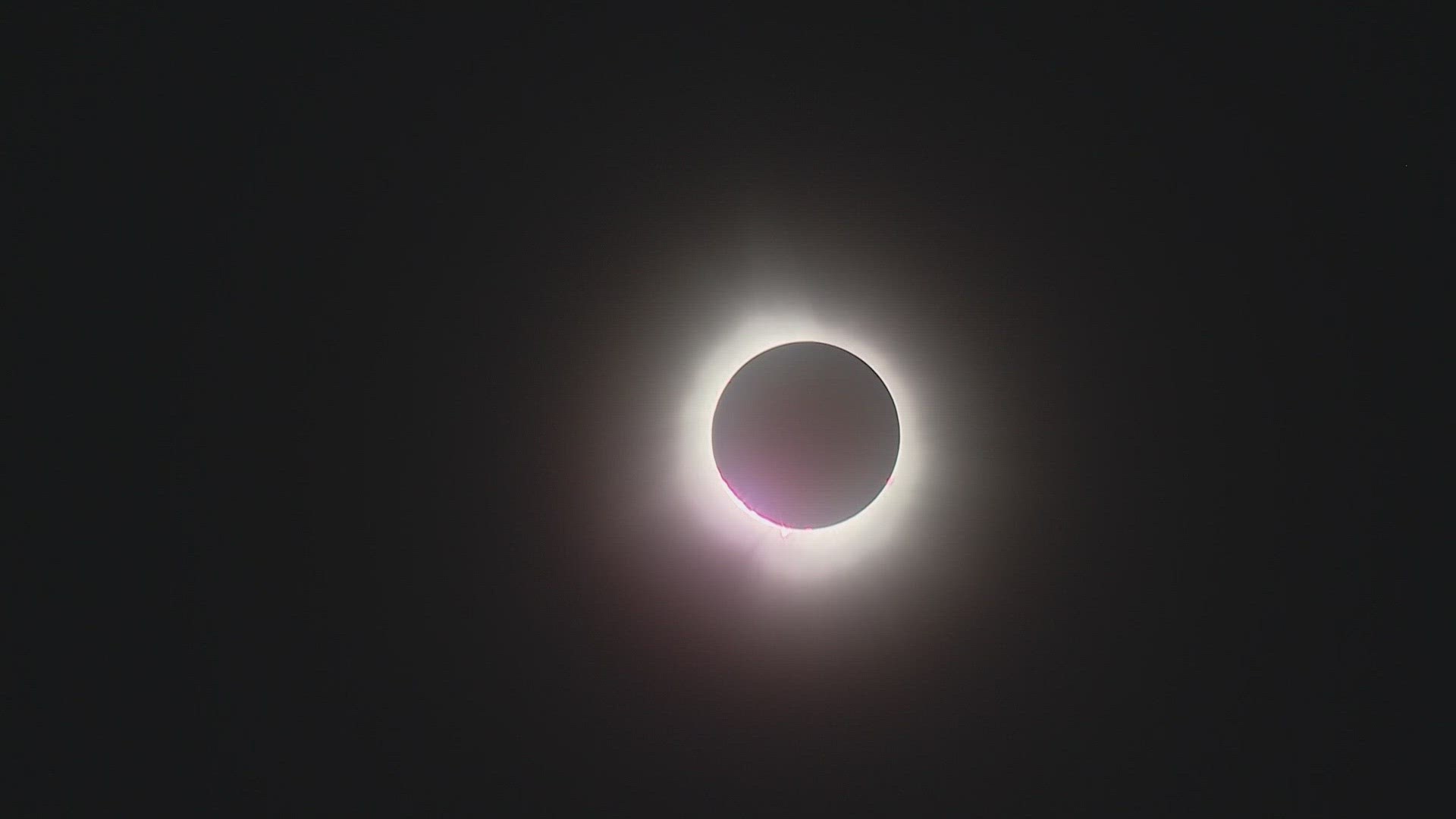WASHINGTON — The highly-anticipated total solar eclipse captivated millions of spectators across the U.S. Monday afternoon.
Those in the densely populated path of totality saw up to four minutes of midday darkness on Monday afternoon. Eclipse mania gripped all of Mexico, the U.S. and Canada, as the moon swept in front of the sun, blotting out daylight.
It had been nearly seven years since the U.S. was touched by a total solar eclipse that spanned coast-to-coast. More than 215 million U.S. adults watched the celestial show, either virtually or in person, in 2017.
Monday's solar eclipse was the continent’s biggest eclipse audience ever, with a couple hundred million people living in or near the shadow’s path, plus scores of out-of-towners flocking in.
It will be another 21 years before the U.S. sees a total solar eclipse on this scale again.
When is the next solar eclipse after 2024?
Full solar eclipses occur every two or three years, often in the middle of nowhere like the South Pacific or Antarctic. The next total solar eclipse, in 2026, will grace the northern fringes of Greenland, Iceland and Spain.
North America won’t experience totality in a solar eclipse again until 2033, with Alaska getting sole dibs. Then that’s it until 2044, when totality will be confined to Western Canada, Montana and North Dakota.
There won’t be another U.S. eclipse spanning coast-to-coast until 2045. That one will stretch from Northern California all the way to Cape Canaveral, Florida.
How often does a solar eclipse occur?
Solar eclipses of all kinds happen more frequently than one might think.
NASA breaks down the math to about 2,380 solar eclipses of all kinds every 1,000 years — or roughly 2-3 solar eclipses each year. For total solar eclipses, where the moon completely covers the sun, it works out to two eclipses every three years.
Why don’t eclipses occur every new moon?
Due to the moon's "tilted" orbit, its shadow is constantly changing placement. Sometimes it's too low and other times it's too high above Earth.
Eclipses occur when its placement is just right.
The Associated Press contributed to this report.

